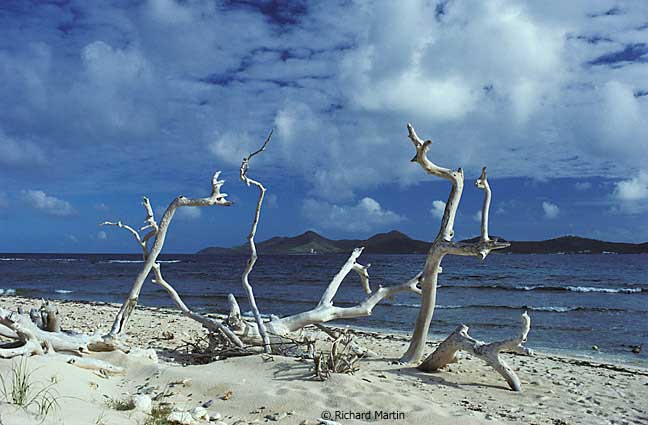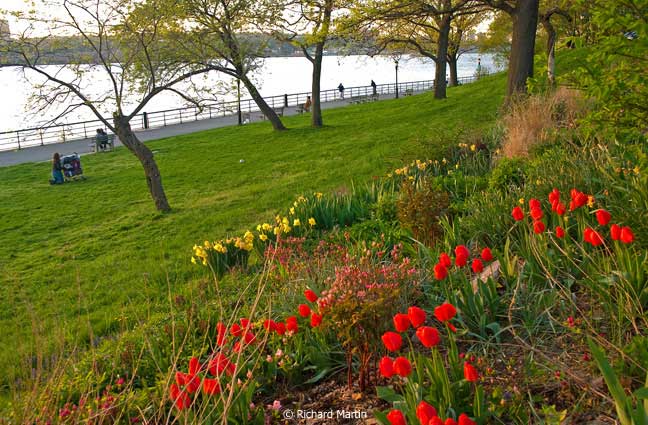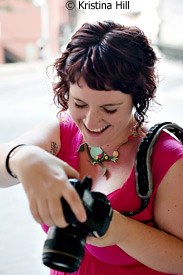Editor's Note: Since Richard Martin retired a few years ago, he's been kind enough to find some time to write for us and be a participant in NYIP's Forum. His annual calendar has helped us mark the passing of time at NYIP, and Richard suggested a piece about how he works with his wife and daughter to create these remarkable calendars. Richard still pursues his photography and enjoys being a doting grandparent.
When I was a Student Advisor for NYIP, one of the most common questions I fielded from students was "what should I take a picture of?" My reply was always the same: photograph what interests you and what you know. It's a way of approaching the problem of inspiration. But let's turn this around. How do images move people who view them? Think about some of the iconic photos of certain dramatic events of the past — the raising of the American flag on the island of Iwo Jima six months before the end of the Pacific war in 1945; the sailor planting a kiss on a nurse in Times Square that same year; the shot of a screaming child running from a napalm attack in Vietnam in 1972; and the haunting image of the Afghan girl that graced the cover of National Geographic magazine in 1985. Each of these evokes a strong emotional response in the viewer though somewhat different in each case.
I never made a photograph that had such a widespread impact. However, each year I produce a calendar in which I create the images (one for each month) and my wife Gerri and my daughter Jennifer write poems for each, using the image for inspiration. I won't go into the creative process I employ to make the images. That's somewhat intuitive and beyond the scope of this article. But the two ladies will happily discuss what motivates them in writing the poems.
Here are four images that I used in my calendars. Figures 1 and 2 are from a few years ago and Jennifer wrote the poetry for both of those. Here is what she says about them:


"For the past 9 years now I have been working with my father on an annual calendar that combines his photographs with poetry written by my mother and me. The way we usually work is for him to first give us 12 images that he has chosen for that year and then we select the ones that we are inspired to write about.
The kinds of photos that I enjoy writing poems for usually have a specific object or area that jumps out at me. Often it is something that is out of the ordinary, such as a solitary person in a landscape scene or an area of bright color in a relatively simple background. Sometimes the photos that I find most beautiful, such as a pink and purple sunset, are the hardest for me to write poems about. With these photos I usually just try to find interesting, "poetic" words to describe what you see in the picture. While some of these poems turn out nice, they are not my favorites. To say it another way, a photo that tells a fascinating story (and sometimes a terrifying or depressing one) is a photo that inspires interesting poetry but is not one that I would hang on my wall. But a stunning sunset picture can hang in my living room any day.
When writing for photographs I am most excited when I can personify inanimate objects in some way and make them come alive in the poem. There have been a few examples of this over the past year's calendars. The ones below were two of my favorites:
In the photo of the tree limbs on the beach I was struck by how the tree seemed to be caught in motion, in a dancer's pose. This inspired the line "When no one was looking, we danced," and then the rest of the poem continued the idea of motion by comparing the limbs to tentacles grasping for fish.
I used a similar concept with the red flowers in the other photo, whose bright colors reminded me of fancy ladies dressed for a date or a party. I then imagined an entire story where these "beauties" were disappointed when all the visitors (or party guests if you will) were more interested in the river than in their fancy dresses."
Here is Jennifer's poem for Figure 1, a shot of the beach on Buck Island in the U.S. Virgin Islands:

Figure 2, taken by the Hudson River in New York City:

Figures 3 and 4 are images from the 2011 calendar and here are Gerri's thoughts:


It never occurred to me that I would be writing poems again until my husband asked me to help my daughter Jennifer write the poems for his yearly calendar. I always thought she did an exemplary job on her own. But with a three-year-old and a business to take care of, she found it difficult to complete the work on the last two calendars.
I often used images to inspire my English classes to write. I liked to ask them questions about the colors and shapes, and to use their imagination to describe what they saw. I tried to choose photographs that either showed interesting or active people or objects in an unusual setting. Most of my husband's photos emphasize these images.
The two that I remember most in recent calendars were the sand castles on the dunes near Lake Champlain, and the picture of the couple on the bench facing the lake framed by the bending branch of the tree to their left.
The sand castles were so unique sitting by themselves with groups of people far from them on the bank of the lake. I loved the idea that the castles had a place of their own (like a condo) that was separate from the rest of the scene.
The couple seemed isolated but protected by their own intimacy and the bending branch that sheltered them from the elements. The photo emanated a genuine emotion of contact and loneliness at the same time."
Gerri's poem for Figure 3, a shot of the beach at Alburgh Dunes State Park in Vermont:

And for Figure 4, taken at North Hero State Park in Vermont:

Once I had selected the images I wanted to use and received the poems from my wife and daughter, I then assembled everything in Photoshop, via Layers, including borders around each month page that are color-keyed to some dominant color in the image. Figure 5 is an example of the final product for January of 2011.

I think it's useful for students and other photographers to consider how those who view their images understand them. What is the purpose of the photo? Did the photographer succeed in his/her endeavor? Does the image INSPIRE any particular feeling in the viewer? Put yourself in the other person's shoes. While we all must follow our own creative impulse and not be unduly influenced by others (like family and friends), few photographers take pictures only for themselves. Think about it.






